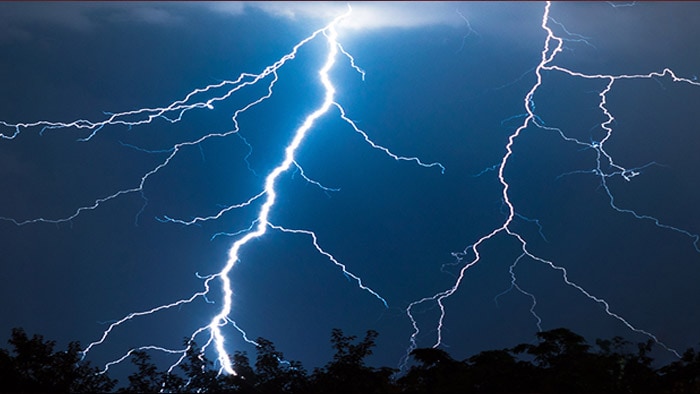At a glance
About 40 million lightning strikes hit the ground in the United States each year. But the odds of being struck by lightning in a given year are less than one in a million, and almost 90% of all lightning strike victims survive. The odds of being struck multiple times is even less, with the record being seven times in one lifetime. There are some factors that can put you at greater risk for being struck, such as participating in outdoor recreational activities or working outside. Regional and seasonal differences can also affect your risk of being struck by lightning.

Lightning strike injuries and deaths vary by region
Although lightning affects all regions in the United States, the Southeastern states are most at risk. Lightning generally decreases from the southeast to the northwest, except for a few places, such as the Rocky Mountains, where thunderstorms occur regularly during the summer.
Florida, Texas, Colorado, North Carolina, Alabama, Arizona, Georgia, Missouri, New Jersey, and Pennsylvania have the most lightning deaths and injuries. Florida is considered the "lightning capital" of the country, with more than 2,000 lightning injuries over the past 50 years.
Since 2006, only five states (Alaska, Delaware, Hawaii, New Hampshire, Washington) and the U.S. Virgin Islands have reported no lightning deaths.
Quick facts
- From 2006 through 2021, there were 444 lightning strike deaths in the United States.
- Males are four times more likely than females to be struck by lightning.
- The average age of a person struck by lightning is 37 years.
- About one-third of lightning injuries occur indoors.
Lightning deaths are most common in the summer
Lightning can occur during any time of the year, but most lightning deaths occur during summer, especially during July.
Did you know?
Participating in certain activities increases the risk of being struck by lightning
Lightning most often strikes people who engage in outdoor recreational activities or work outside. From 2006 through 2021, leisure activities such as fishing, boating, playing sports, and relaxing at the beach accounted for almost two-thirds of lightning deaths.
Work-related activities contribute to about 18% of total lightning fatalities, with farmers and ranchers at highest risk. Most work-related lightning strikes are among males.
